
BENEFITS OF SMALL CLASS SIZES
In an era of educational innovation and evolving pedagogical approaches, one factor that consistently exerts significant influence on student success is class size.
Small class sizes, especially in the formative years in elementary school, provide benefits like enhanced academic performance through personalized instruction and increased teacher attention, leading to improved student engagement and deeper understanding of material. What then is the best class size for primary schools?
For elementary schools, a class size of 15 to 20 students is often considered optimal. For middle and high schools, class sizes can be slightly larger, typically ranging from 20 to 25 for schools that can afford the cost “Quora,” (2020, December 4).
Research, including large-scale projects like Project STAR (i.e., Standardised Teacher Assessment and Review), supports these findings, showing higher test scores and better behavior in smaller classes, with lasting positive effects for students.
This improved environment also fosters essential social-emotional growth and promotes a love for learning, motivating students to succeed in their educational journeys.
One of the advantages of private schools over public schools is that they are able to control class sizes. This is because they’re not under governmental obligation to accept as many pupils as possible in a catchment area.
Private schools tend to maintain a policy of relatively smaller classes. For example, at Oforiwaa Memorial School, the ratio of 15 students to 1 teacher out performs even most other private schools in its category, not to mention public counterparts.
However, even among private schools, a significant number are unable to maintain smaller classes, in spite of its immense benefits to students. A major reason why many private schools are unable to minimize their class sizes is cost.
The revenue and sustainability of private schools are primarily derived from enrollment numbers. That is, the higher the enrollment numbers, the better for revenue and sustainability. For this reason, many private schools are not able to minimize class sizes and reap the associated benefits for their students (“Education Insights,” 2025).
One empirical study suggests that the lower the student-teacher ratio, such as obtained at Oforiwaa Memorial School (15 students per 1 teacher), the more support and attention students are likely to receive (Biddle and Berliner, 2002) which translates to mean higher academic performance, and vice versa.
Among some of the benefits that accrue to smaller classes are:
1. ACADEMIC BENEFITS
a. Personalized Learning: With fewer students, teachers can better tailor their instruction to meet individual needs and learning styles, providing targeted support and challenging students appropriately.
b. Improved Academic Performance: Studies show a correlation between smaller class sizes and better academic outcomes, including higher test scores and improved overall achievement.
c. Enhanced Focus and Engagement: Smaller classes reduce distractions, allowing students to concentrate better on their work and participate more actively in discussions and activities.
d. More Timely Feedback: Teachers can provide more frequent and constructive feedback to students in smaller classes, helping them understand their mistakes and make progress more effectively.
2. SOCIAL-EMOTIONAL BENEFITS
a. Stronger Relationships: Smaller classes allow teachers to build stronger, more meaningful relationships with their students, fostering a supportive and trusting learning environment.
b. Increased Class Participation and Collaboration: Students in smaller classes are more likely to participate in discussions and group activities, building confidence and communication skills.
c. Sense of Community: The close-knit environment of a small class can create a stronger sense of belonging and community among students.
d. Reduced Peer-Related Issues: Smaller class sizes can lead to lower levels of peer-related issues like bullying, as students have more opportunities to connect with their classmates and build positive relationships.
3. EFFECTIVE CLASSROOM MANAGEMENT
a. Student Behavior: Smaller class sizes make it easier for teachers to manage student behavior and address any issues promptly.
b. More Effective Instruction: With fewer distractions and better behavior management, teachers can maximize instructional time and create a more focused learning environment.
c. Student Comfortability: In smaller classes, children often feel more comfortable participating in discussions and activities increases long-term performance, stronger teacher retention, and overall student achievement. REFERENCES:
1. Biddle, B. J. & Berliner, D. C. (2002, February). “Small Class Size and Its Effects” As cited in Educational Leadership. Retrieved on August 22, 2025, from, https://www.researchgate.net/publication/234608484_Small_Class_Size_and_Its_Effects
2. “Education Insights,” (2025). Retrieved on August 22, 2025 from, https://stpetersprep.co.uk/news/benefits-smaller-class-sizes/.
3. “Quora,” (2020, December 4). Retrieved on August 24, 2025 from, https://www.quora.com/What-is-the-best-classroom-size?
WHY BASIC EDUCATION?
Simply because it:
"Provides the foundational, fundamental skills and knowledge needed to function in a society, such as reading, writing, and arithmetic. This education forms the essential groundwork upon which all future learning can be built, ensuring every individual has the minimum needs and skills for personal development and to be a contributing member of their community."
We Aim to achieve the Best in Basic Education
ADMISSIONS IN PROGRESS: NURSERY-JHS

Excursion To The Police Divisional HQ in Techiman
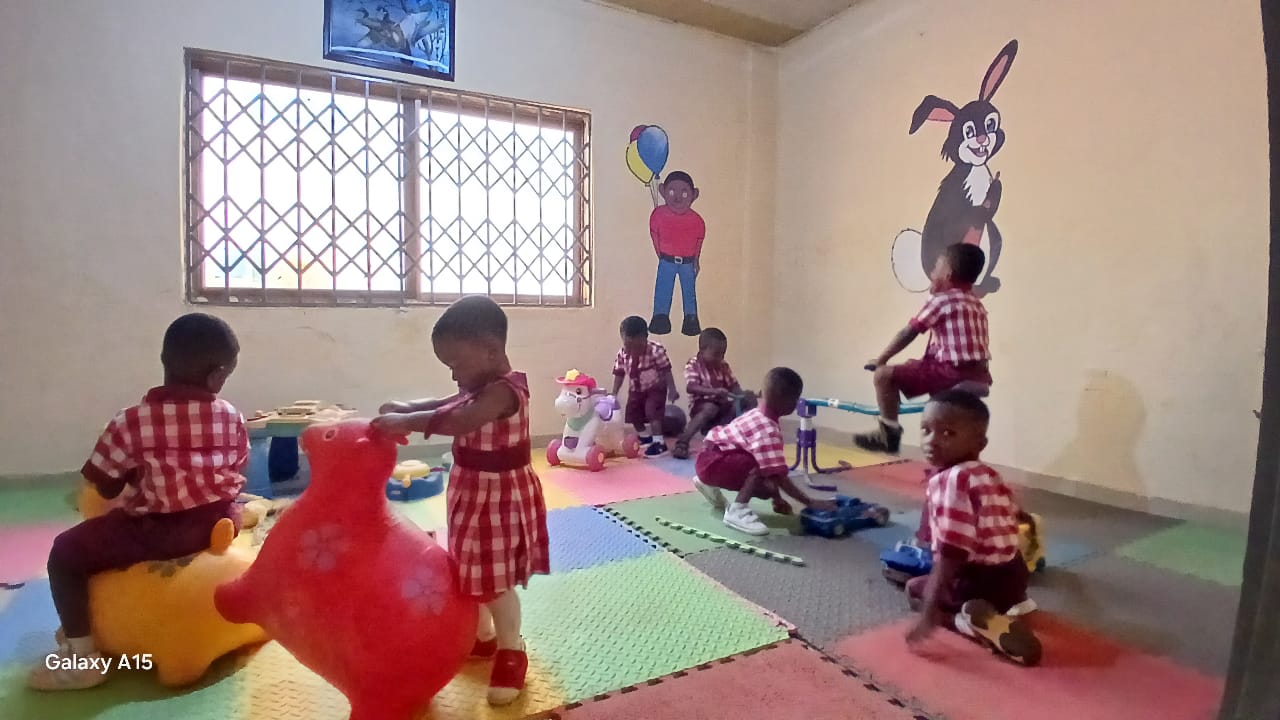
At the Kiddie Playground
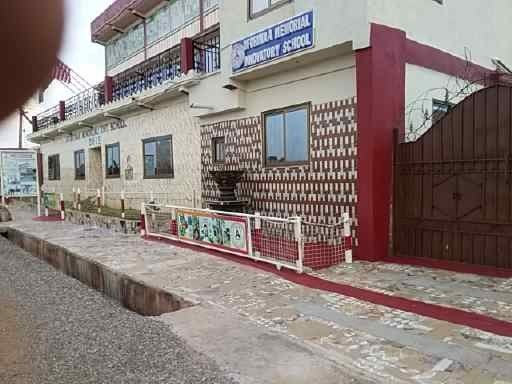
Entrance/Front View of School
Nursery kids playtime
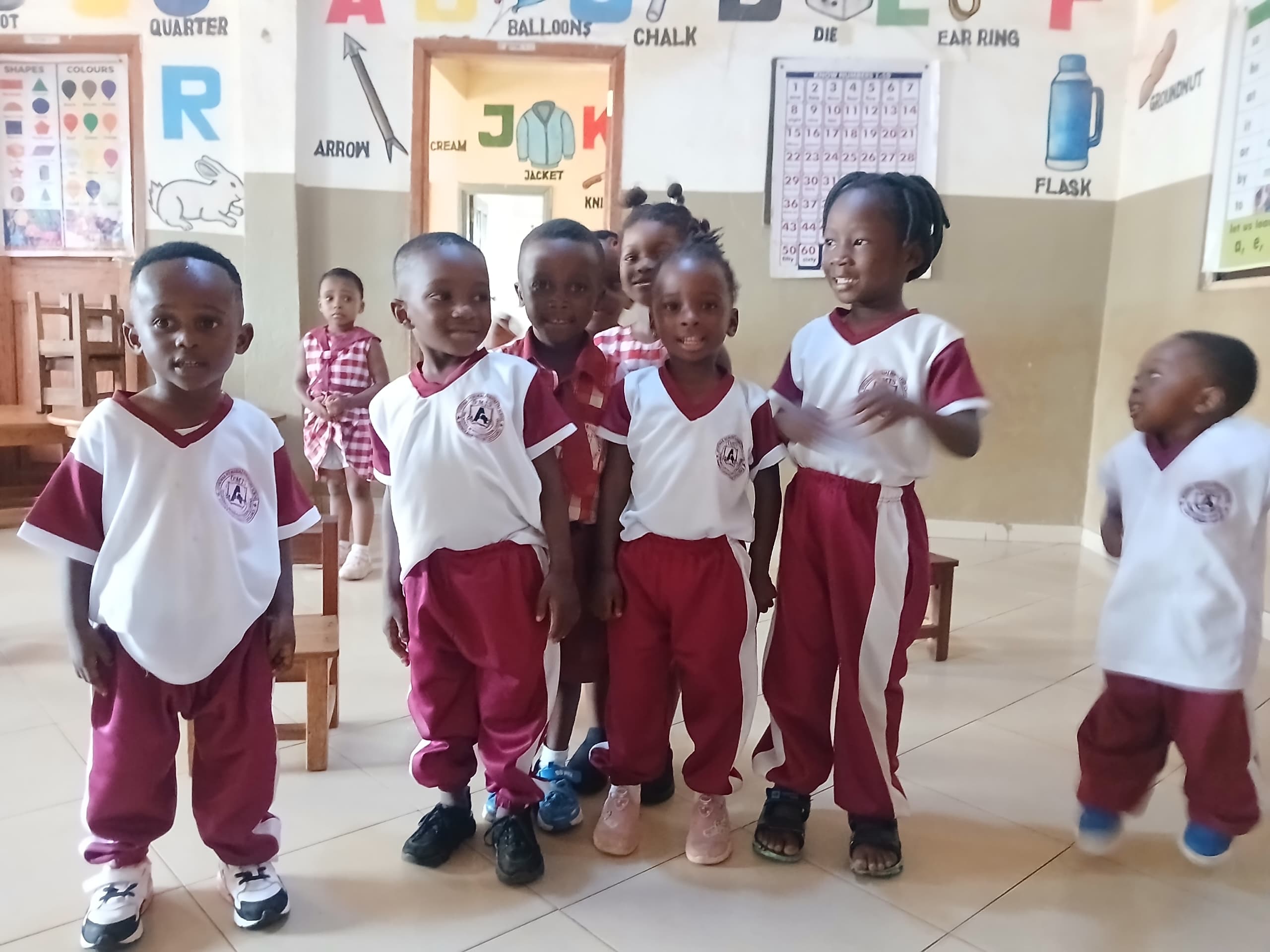
The Nursery Team
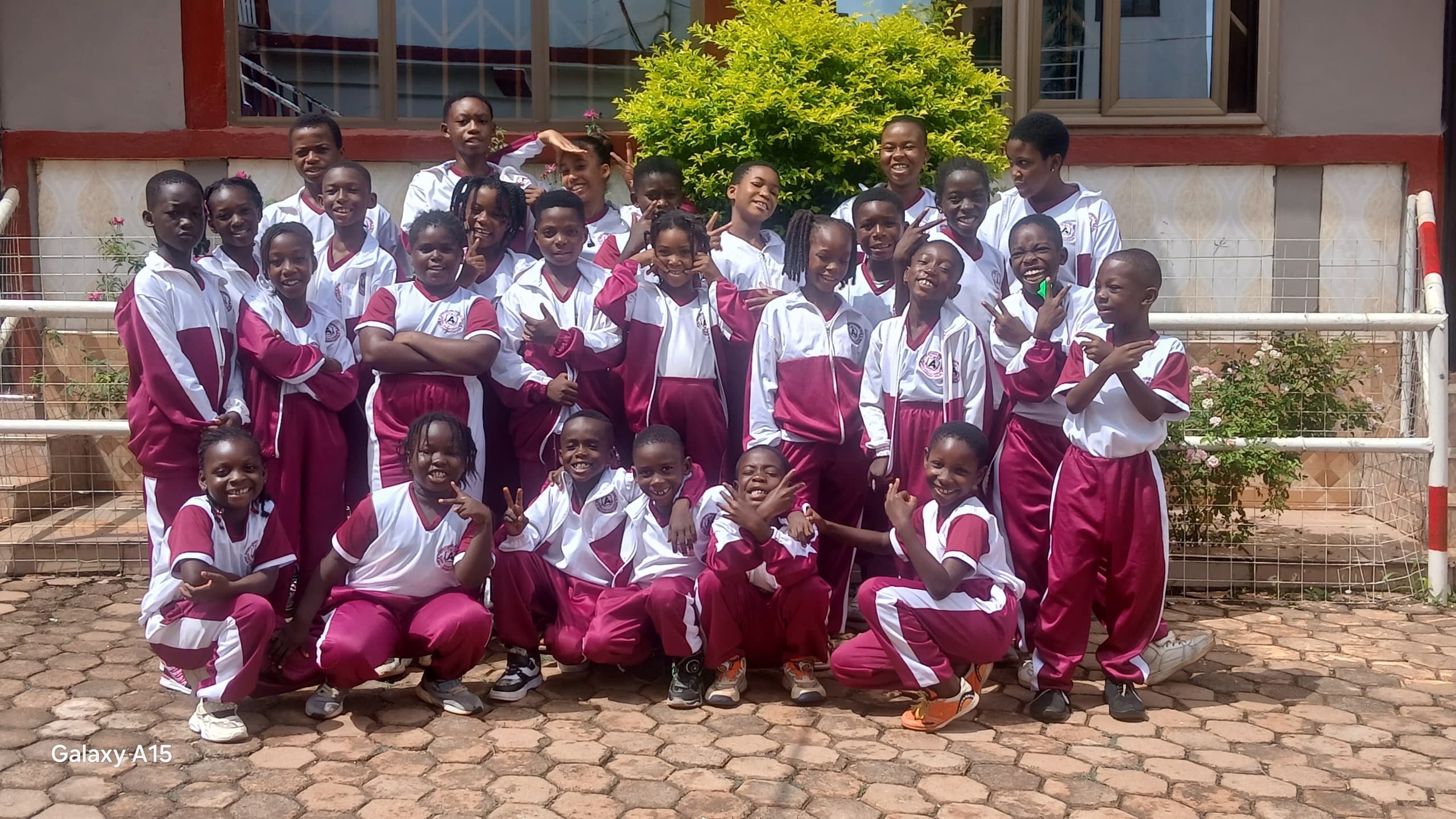
Students in Friday Wear

Students in Regular Uniform
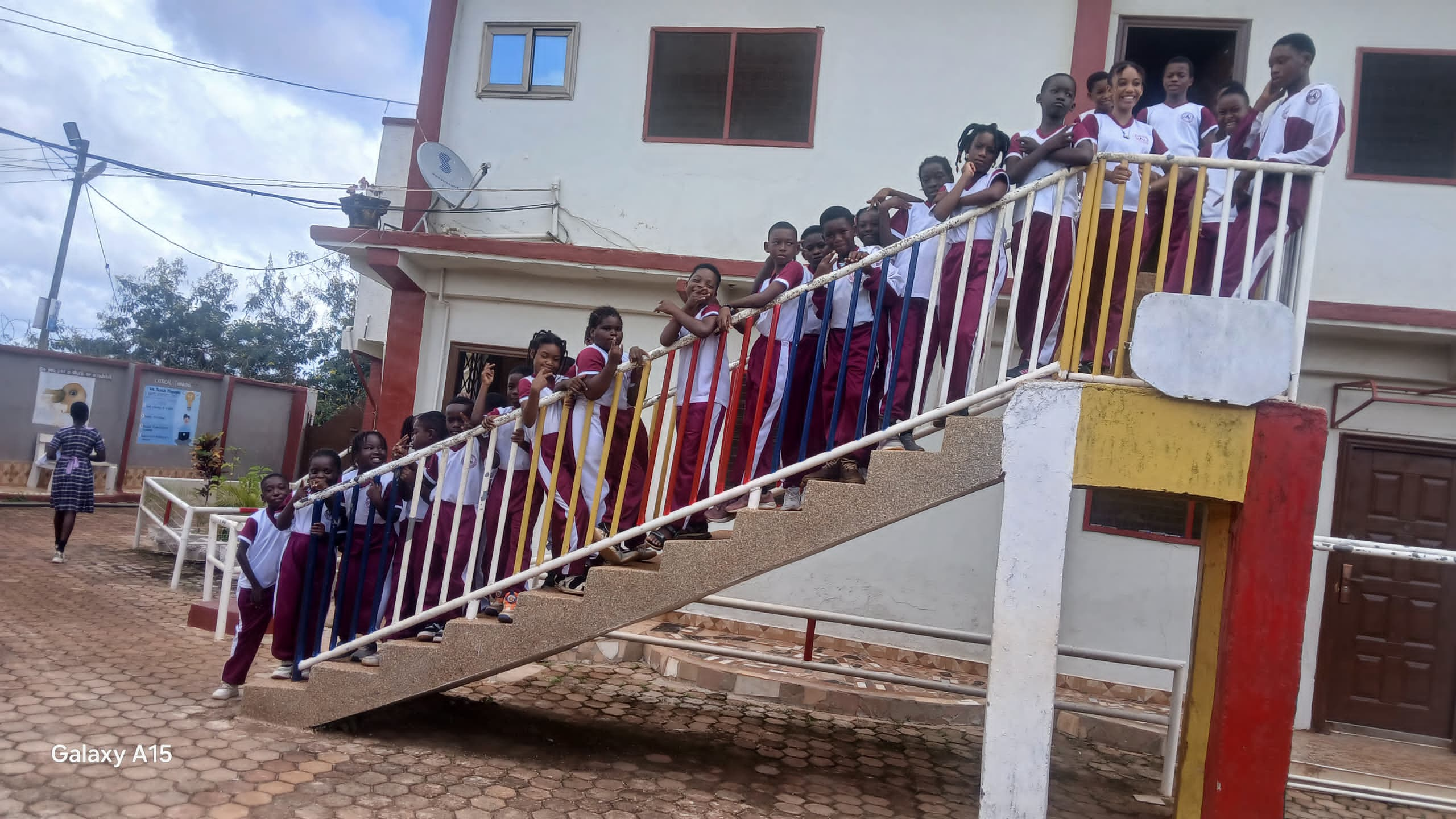
Group picture on the Stairway
A NOTE ABOUT MONTESSORI EARLY CHILDHOOD EDUCATION
(1) Allow children to develop their unfolding minds freely, and their natural goodness will shine forth - Maria Montessori.
(2) Education is a natural process undertaken by children and shaped by the experiences in the environment - Maria Montessori.
_____________________
*Maria Montessori (1870 -1952) was an Italian medical doctor, educator, and innovator, renowned for her philosophy of educational method that bears her name, and builds on the way children learn naturally. She founded the first Montessori school, called Casa dei Bambini, or Children's House in Rome on January 6, 1907. She remains influential today about how children are taught.

Founder/Director
____________
Retired Lecturer:
Catholic University of Ghana, Fiapre, Bono Region
&
Mercy University, Dobbs Ferry, New York, USA

Teachers Head

Teaching Staff

Teaching Staff Ms. Bridget Adubia
Ms. Bridget Adubia
Teaching Staff

Ms. Regina Adubea
Teaching Staff

Teaching Staff

Non-Teaching Staff


